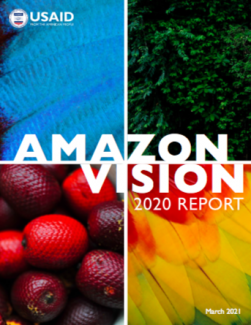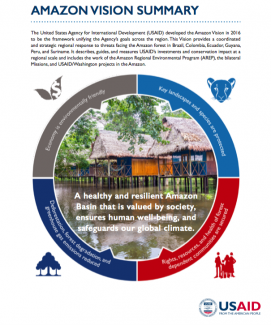The Amazon is home to 33 million people, 60 percent of the world’s remaining rainforests, and one-third of all known plant and animal species. Local communities rely on the region’s natural capital for water, food, and livelihoods. Populations worldwide benefit from the Amazonian ecosystem, which affects global weather patterns and holds up to 140 billion tons of carbon dioxide – the equivalent of 14 decades worth of human emissions. This region’s importance cannot be overstated; the threats it faces cannot be underestimated.
USAID envisions sustainable and self-sufficient local governance of the Amazon. By seeking locally sustained results, leveraging external funding, building local capacities, accelerating enterprisedriven development, and responding to priorities set forth around regional cooperation, USAID helps host governments on their journey to selfreliance.
The purpose of this report is to describe the regional context, the current status and achievements of USAID’s biodiversity and sustainable landscape initiatives in the Amazon basin through the lens of the Amazon Vision.


